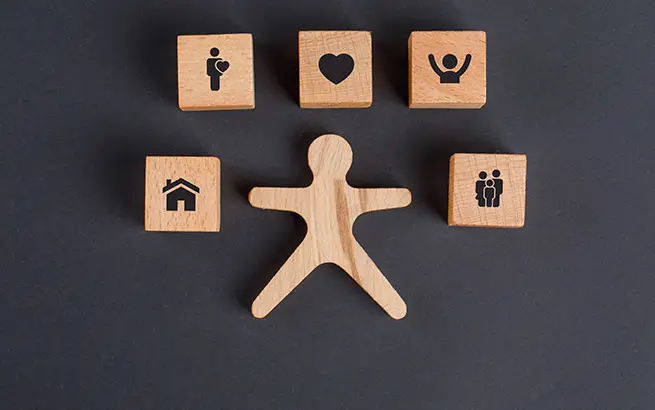In healthcare, the primary goal of care is a basic concept that guides all medical practices and interventions. It refers to the general goal or purpose of medical treatment and patient care activities.
This goal can vary depending on the individual’s health status, the environment, and the specific needs and preferences of the patient.
In this blog, you will explore the details of the primary goal of care and its significance in offering effective and caring healthcare.
What is the Primary Goal of Care?

The primary goal of care is to optimize patient outcomes by making sure that treatment and care services are exactly according to patients’ needs, effective, and specific to individual needs.
It involves a complete strategy that includes managing symptoms, promoting wellness, preventing disease progression, and improving the quality of life.
Whether in acute care settings, chronic disease management, or palliative care, the primary goal remains to meet the patient’s physical, emotional, and psychological needs effectively.
Key Aspects of the Primary Goal of Care

The Primary Goal of Care involves several key aspects that collectively work to optimize healthcare outcomes. Here are the key elements of the primary goal of care.
Patient-Centered Approach
A patient-centered approach is at the heart of defining the primary goal of care. This way, care decisions align with the individual patient’s values, needs, and preferences.
It involves active communication between caregivers and patients to make informed decisions that reflect the patient’s desires.
Effective Health Improvement
The primary goal extends beyond treating physical symptoms to encompass all aspects of a patient’s health, including mental, emotional, and social well-being.
Healthcare providers aim to implement the best care plans that address these various requirements.
Prevention and Wellness
Preventive care is a key component of the primary goal, focusing on preventing illness before it starts and managing conditions to avoid further damage.
This best approach not only improves long-term health outcomes but also reduces the need for more intensive treatments or hospitalizations.
Challenges in Achieving the Primary Goal of Care

Achieving the primary goal of care is not without challenges. It requires perfect coordination among healthcare providers, effective communication, and often, substantial healthcare resources.
Additionally, adapting care practices to meet the various and changing needs of patients is an ongoing challenge in a dynamic healthcare environment.
Key challenges include:
Resource Allocation: Efficiently distributing limited resources such as staff, equipment, and funding to maximize patient outcomes.
Healthcare Provider Burnout: Managing the high stress and workload that can lead to burnout among healthcare professionals, potentially impacting patient care quality.
Regulatory Compliance: Dealing with a complicated structure of healthcare regulations that can sometimes work against rather than help patient care processes.
Technology Integration: Integrating new technologies into existing healthcare systems without affecting patient care or raising prices.
Patient Engagement: Encouraging patients to take an active role in their healthcare, is essential for effective chronic disease management and preventive care.
Strategies for Effective Implementation of Care Goals

To successfully achieve the primary goal of care in healthcare, different strategic approaches must be employed.
These strategies are built to enhance the efficiency and effectiveness of care delivery so that patient outcomes are optimized across all aspects of healthcare.
Here are the strategies for the effective implementation of care goals
Integrating Technology
The use of health information technology can enhance how care goals are managed and achieved.
Electronic health records, patient portals, and telemedicine are examples of technology that support better monitoring, communication, and treatment planning.
Education and Training
Healthcare professionals are well-trained in patient-centered care approaches and communication skills are essential.
Continuous education on the latest health guidelines and treatment protocols also supports the effective realization of care goals.
Policy and Healthcare Reform
Healthcare policies must promote and support frameworks that facilitate the effective implementation of the primary goal of care.
This includes funding for preventive medicine, support for chronic disease management programs, and resources for comprehensive palliative care services.
How FMRC Implements the Primary Goal Of Care?

At FMRC, we not only improve the accessibility and efficiency of care but also enhance the overall patient experience by making sure that each treatment plan is fully addressed.
Both the physical symptoms and the more general psychological and social needs of our patients.
This approach supports our mission to improve overall health, prevent disease progression, and enhance the quality of life for our community members.
And making FMRC a leader in delivering patient-focused care that truly aligns with the primary goals of modern healthcare.
Bottom Line
The primary goal of care is a fundamental concept that underpins all healthcare delivery. Its effective implementation ensures that patient care is not only about treating diseases.
But it is also about promoting overall health, improving quality of life, and respecting patient preferences at every stage of care.
As healthcare continues to change, so too will the approaches and strategies intended to achieve these essential care goals.
FAQ’s
What makes the primary goal of care patient-centered?
It is tailored to align with individual patient preferences, values, and specific health needs, ensuring that the patient’s wishes guide all medical decisions.
How does preventive care contribute to the primary goal of care?
Preventive care helps to intercept potential health issues before they develop into more serious conditions, thus maintaining health and reducing the need for surgical treatments.
Why is comprehensive treatment important in achieving the primary goal of care?
Comprehensive care addresses not just the physical symptoms but also the emotional, social, and mental health needs of patients, leading to more comprehensive and effective care outcomes.















